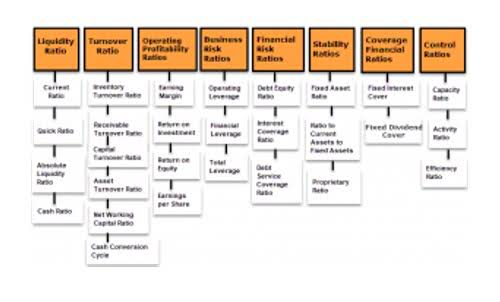
As for the equations, this means that beginning WIP costs can’t be included in total costs (i.e. in the numerator). As can be seen from the list, the bulk of all conversion costs are likely to be in the manufacturing overhead classification. In a business that uses a high degree of automation, it is likely that manufacturing overhead costs will comprise the bulk of all conversion costs. Explore how conversion costs influence product pricing and their essential role in cost accounting, distinguishing them from prime costs. Timber, glue, nails, glass and finishing materials have been treated as direct materials because they all become part of finished and ready to sell table.
Definition of Conversion Costs
- For example, if your conversion metric is signing up for your email list, the signup form should be prominent.
- In terms of direct labor, prime costs overlap with conversion costs but emphasize labor’s role in transforming raw materials into finished goods.
- Analyzing conversion costs helps companies adjust pricing strategies in response to changes, such as rising labor wages.
- They identify several bottlenecks in the production line and plan to invest in new machinery and training for workers.
- The conversion cost is reported in the financial statements as part of the COGS and the inventory valuation.
Conversion costs reflect a company’s total amount spent converting raw materials into fully-furbished products. It includes the direct labour costs and the amount spent on indirect factors like electricity bills, factory rent, etc., which cannot be directly traced down to the production of a single unit. Conversion costs are beneficial, especially for manufacturing businesses which have to deal with conversion on a large scale daily. They help the company to take important financial decisions and help them to bring efficiency to the production system.
- If those costs weren’t 100% complete, the product wouldn’t have been transferred out of that department!
- Direct labor cost amounted to $200,000 and factory overhead is estimated at $250,000 based on direct labor hours.
- It might be 50% complete with respect to the conversion process that transforms those raw materials into finished products.
- They impact profitability, competitiveness, and strategic decision-making.
- It’s important because it will become the cost of the inventory which will impact the selling price.
- A similar process is used to account for the costs completed and transferred.
Which Costs Are Both Prime and Conversion Costs?

If this seems daunting, just remember that the percent completion for transferred-in costs is always 100%. Transferred-in costs are incurred in a different department during a process completed by that department. If those costs weren’t 100% complete, the product wouldn’t have been transferred out of that conversion costs department! If you recognize this, you can simplify your transferred-in cost calculations somewhat. Let’s assume a unit in ending WIP is about halfway through the process of completion. It would be natural to assume it is about 50% complete (and thus equal to 0.5 equivalent units).

How to Calculate Conversion Cost
To speed up the production process, they rented an assembly plant for ₹1,50,000/Month. For the final assembly of cars, they rented heavy-duty machinery for ₹80,000 and paid ₹50,000 as the electricity bill. Thus, each cost concept provides a somewhat different view of the costs incurred to create products, though both concepts include the cost of direct labor. This means that the toy company spends $10 on direct labor and manufacturing overhead for each doll it produces. Therefore, conversion cost per equivalent unit under the FIFO method is $15.12.
How to Calculate Conversion Cost Formula Example
- Management needs to understand its costs in order to set prices, budget for the upcoming year, and evaluate performance.
- Let’s consider an example to illustrate the concept of conversion cost variance.
- Manufacturing overhead includes indirect costs that cannot be directly attributed to a specific product.
- Because the weighted average method includes those $15,000 in this period’s rate, this period’s EWIP will be at least a little higher due to last period’s inefficiency.
- The costs for material and conversion need to reconcile with the total beginning inventory and the costs incurred for the department during that month.
Conversion costs are vital to be calculated by each companysince they are fundamental for making important business decisions and carryingout basic accounting tasks. Appropriately, then, process costing pools costs at the process-level (which usually means its pooled at the department-level) rather than being pooled at the job-level or the unit-level. Prime https://www.bookstime.com/tax-rates/california costs are reviewed by operations managers to ensure that the company is maintaining an efficient production process. Remember, these are just a few strategies to improve conversion cost efficiency.

Examples of direct labor workers include welders, machine operators, assemblers and painters etc. This includes rent, utilities, machine repairs, and any other expenses incurred within the factory. From a managerial perspective, understanding the conversion cost ratio allows businesses to evaluate the allocation of resources and identify areas for improvement. It helps in making informed decisions regarding process optimization, cost reduction, and pricing strategies. Let’s consider an example to illustrate the concept of conversion cost variance. Suppose a manufacturing company budgeted $100,000 for conversion costs for a particular production run.

5 FIFO Rates and Cost Allocation (STEP #2 and STEP #
How to assess conversion cost if it is watching a video, the video should be prominent. The two components of prime cost formula are direct materials and direct labor. If they were 100% complete with regard to conversion costs, then they would have been transferred to the next department. Thus, conversion costs are all manufacturing costs except for the cost of raw materials. By calculating the conversion cost per unit or per output measure, managers can compare the performance and productivity of different production units, departments, or divisions. Managers can then use this information to allocate resources, set goals, reward or motivate the workers, or make outsourcing or insourcing decisions.
Thus sum of these equivalent units is the total equivalent units they need for their cost allocations (the below equation does change slightly under the FIFO method, as covered later). Conversion costs include indirect materials, indirect labor, and other overhead costs. ABC Company’s prime costs amount to $650,000 while conversion costs amount to $600,000. If the business is focused on the intensive conversion of raw materials to products, then conversion costs can give better results. In contrast, if the business regularly invests contribution margin a big chunk of its expense on raw materials, Prime costs can provide a better overview.
Leave a Reply